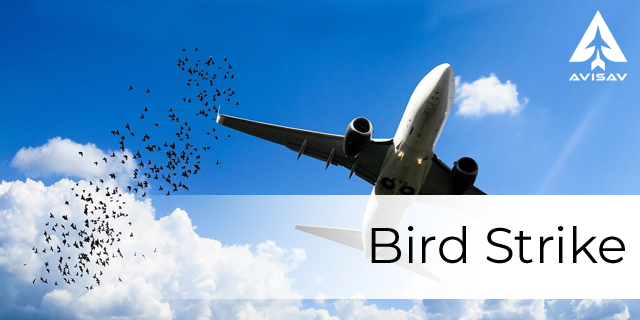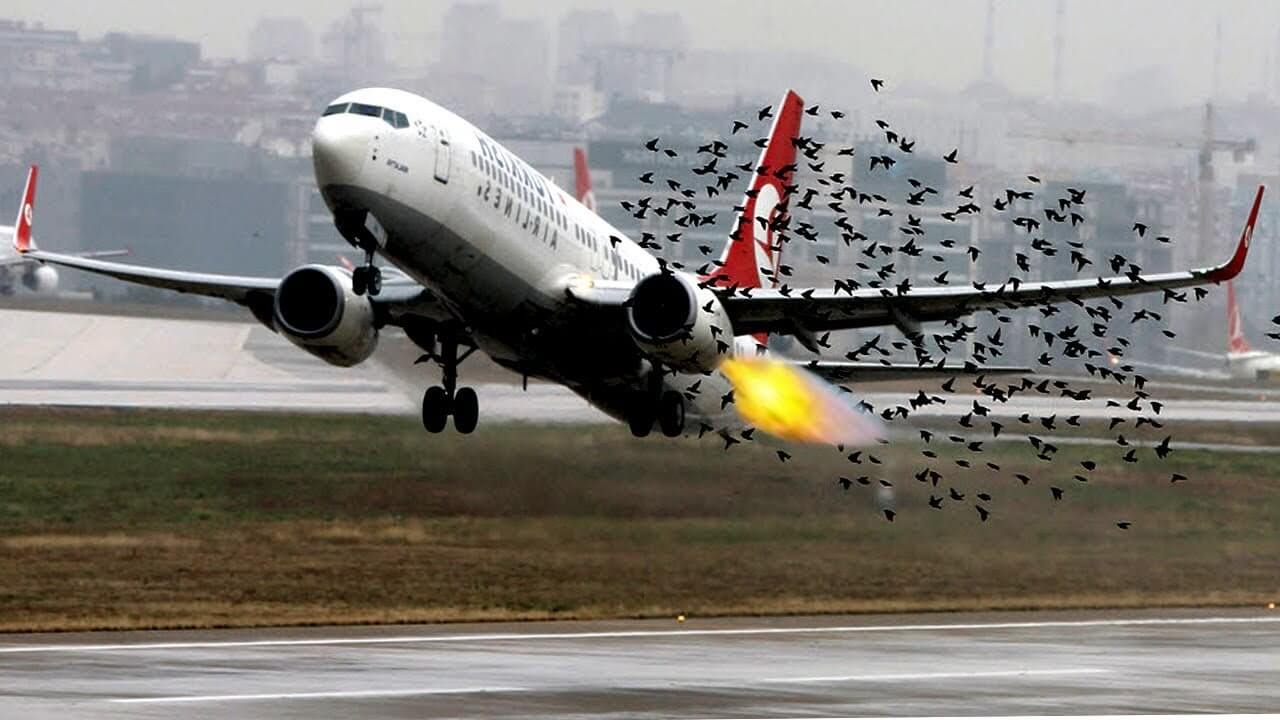
Manufacturers design planes so that they can safely handle the impact of Bird Strike. Moreover, the pilots today pass through rigorous training that enables them to choose the best escape from such events, in case they experience it. However, there is usually not much a pilot can do once a bird flock approaches the aircraft.
According to some statistics, most pilots experience this situation around ten times during their careers. Despite being a relatively frequent situation, collision with the birds usually doesn’t cause significant damage.
In fact, in half of the cases, the passengers or even the pilot does not notice the bird strike. Why? This happens if there were not many birds at that moment. However, thorough inspections of the plane after landing always show proof of such events.
Bird Strike Consequences – Why they are so dangerous?
Bird strikes are, in some geographic regions, very rare, while they are very often in others. This depends on the air traffic density and the number and type, as well as the size of the birds in that region.
Between 1990 and 2015, there were 166,276 reported collisions of the aircraft with birds in the United States, according to the FAA. The vast majority of these caused only minor damage that was noticed just after landing.
Bird Strike Damage
However, such events can also cause very large material damage and expenses for airline companies and airports. With the increase in air transport and the increase in the number of flights, the likelihood of accidents caused by the impact of birds on the aircraft increases.
Today, in worldwide airports, the number of such events is measured in  tens of thousands per annum. The responsibility of individual air traffic subjects for the damage caused by these events is particularly interesting. Also, the rights of passengers in these cases can be addressed.
tens of thousands per annum. The responsibility of individual air traffic subjects for the damage caused by these events is particularly interesting. Also, the rights of passengers in these cases can be addressed.
If the engine of the plane sucks in the bird, it will, unfortunately, be disintegrated. There is a term in the English language coined to express this situation. It is the word “snarge”, coined from two words – “snot” and “garbage”. It perfectly describes the state of the bird when it enters the engine, i.e. the remnants of the disintegrated bird.
Large Birds
Nevertheless, in the case of larger birds, such collisions may cause a certain level of engine damage. The loss of one engine will not cause a hazard, i.e. the plane will not fall. It can fly with just one engine as well.
However, if a large number of birds enter the engines, it can cause multiple crashes or collisions and result in serious damage and danger.
There were several cases of significant damage caused by bird strikes so far. However, most of the lawsuits were rejected. We can say that the reasons should be sought for in the lack of regulations regarding this issue.
Bird Strike – Protection measures – how to avoid them?
 There are some protective measures limited to lower altitudes and airport scope areas. Airports are devoted to wildlife protection and reduction, as well as the removal of their habitats found in the airport vicinity.
There are some protective measures limited to lower altitudes and airport scope areas. Airports are devoted to wildlife protection and reduction, as well as the removal of their habitats found in the airport vicinity.
Although such a reduction is sometimes needed, there are also more humane ways to avoid collisions with birds. In addition, most collisions happen in areas far from the airport. Therefore, this is not the best solution.
A plane can become more visible to birds if, for example, a certain light is on or if it flies at a speed that allows them to lean when the aircraft approaches them.
Bird Strike Prevention & Mitigation
Ultimately, prevention is always better and it is advisable to keep in mind that birds and aircraft should not “meet”, by all means.
Some regulations have changed after the unfortunate cases of collisions between birds and airplanes, with hazardous results. Namely, the movements of birds are being tracked by aviation organizations and services, as well as airports and navigation services. Everything is being done both on the ground and in the air to avoid such scenarios.
Unfortunately, we currently don’t know a 100% efficient way to completely avoid these collisions, despite radars and technology.
At the same time, these collisions are usually seen as low-risk incidents. But, it is true that certain situations can cost the lives of every passenger and crew member. Therefore, it is necessary to work on finding better solutions to this problem.
There is hope for finding better solutions. New technologies can provide innovative tools and systems to combat this problem. For decades, the FAA has been working on the development of special radar used to detect birds, which is otherwise a big problem because they are relatively small.
Manufacturers’ Role
Also, engine manufacturers are trying to design special protective nets to prevent them from entering and sticking to the engines.
Moreover, a lot has been done in the area of education and pilot training. Just ten years ago, the pilots were not obliged to go through special education on behavior in case of a collision with a bird. Also, such situations were not practiced on flight simulators.
Today, experts say, this is a significant part of the curriculum and pilots must undergo extensive training and preventive strategies to react in the best possible way in these situations.
The Bottom Line
While small aircraft will almost definitely experience hazardous situations in case of a collision with birds, larger airplanes can suffer a range of damage levels. For instance, almost no damage for the aircraft, passengers, and the staff, to malfunction with one engine, or hazardous malfunctions of both engines, in the most severe cases.
Therefore, bird strikes or bird collisions represent serious aviation safety issues. FAA, ICAO, and other aviation organizations and services are working on finding solutions to this problem. Thus, keeping rather than destroying the bird habitats located in the vicinity of the airports.
Special radars are already in use. However, these measures have managed to significantly decrease the number of collisions, but not to completely eliminate this serious safety risk. A comprehensive approach, combining new technologies, netting and airport area protection, stream draining, detecting bird movements and habitat management gives satisfactory results.
